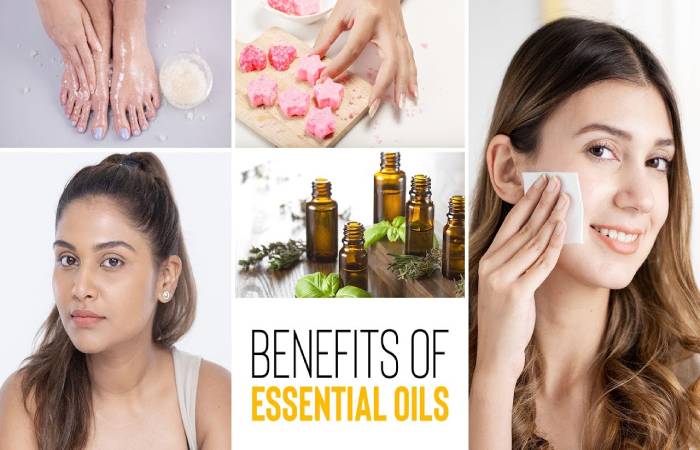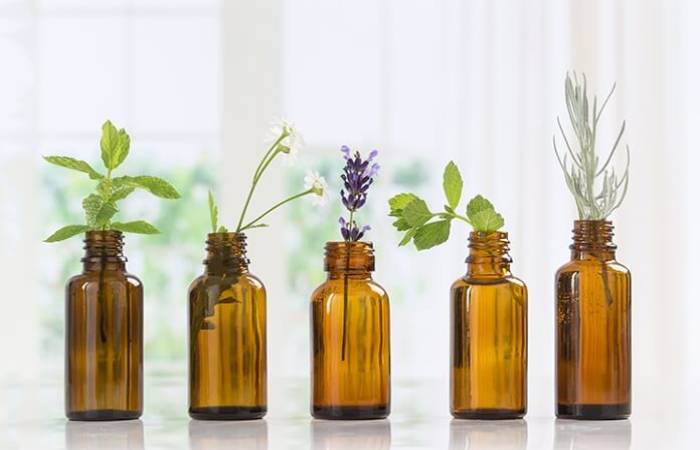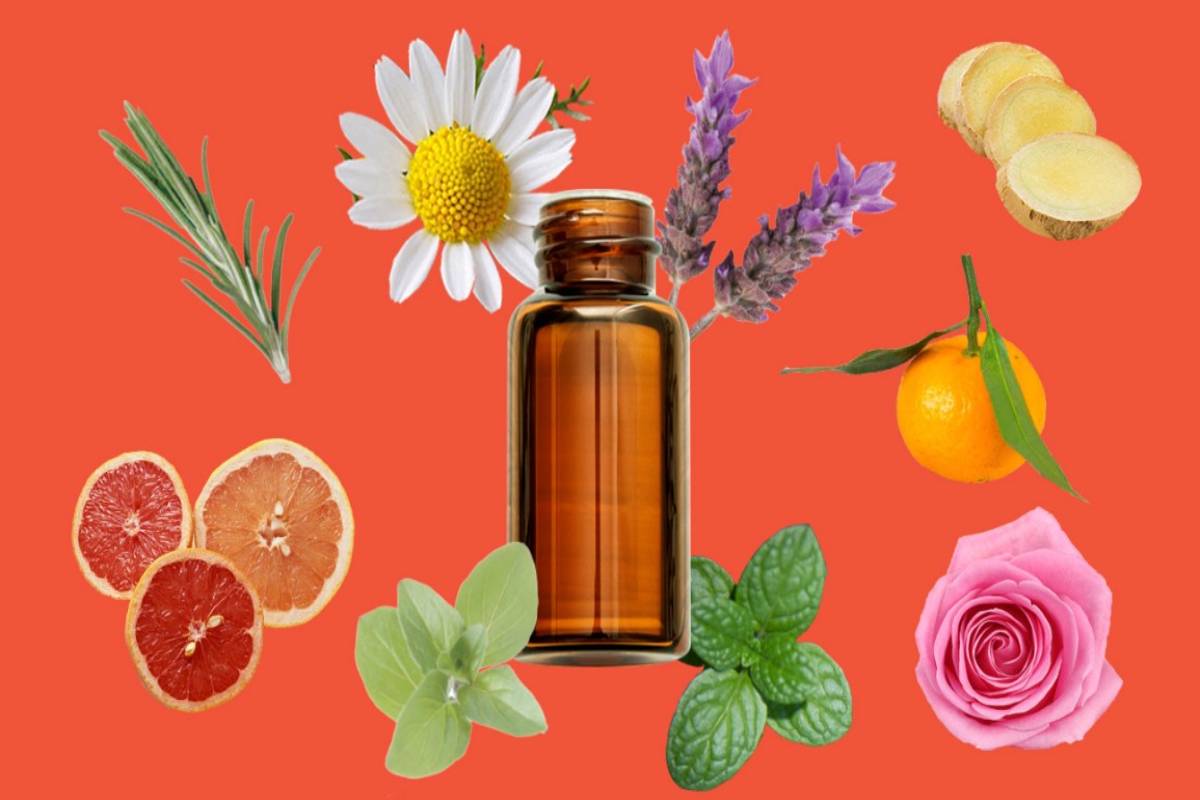Essential Oils Definition
Essential oils can act at different levels in our body and soul. Depending on what need arises, we will act differently. Due to their great affinity for passing through our skin, the absorption of essential oils is direct, rapidly targeting the area to treat.
Its use can be from treating a cold to helping us relax from our daily chaos when we get home. And also, essential oils have compelling anti-infective functions, perfect for treating internal infections.
They told us from Pranarom, a scientific and medical aromatherapy laboratory founded in 1991 by Dominique Baudoux, a world-renowned primatologist pharmacist, and appreciated his aromatherapy works.
Table of Contents
Main Benefits of Essential Oils

The essential oils are liquid extracts from plants. They call “essential” because they have the essence of the plant. They also call indispensable because the body nutritionally requires them. Among the types of oils on the market are tea tree, lavender, lemon, chamomile, cinnamon, sage, among many others.
The essential oils are extracted by distillation, specifically steam stripping. However, other methods can also remove them. Essential oils are also generally used as aromatherapy and as natural medicine.
The health benefits of essential oils are:
1. Relieves Migraine
- Lavender oil generally uses as an anxiolytic or tranquillizer medicine. It acts as a sedative, antihypertensive, antispasmodic, antimicrobial and analgesic. Inhaling this oil can achieve a significant reduction in migraine pain.
- And also, rosemary oil has traditionally used to treat headaches. This oil has effects as an analgesic and anti-inflammatory. Therefore, it reduces the pain associated with migraines.
- Peppermint oil widely used to relieve migraine pain. This essential oil provides headache respite when applied as a gel. All this thanks to menthol, which benefits muscles relax and works as an analgesic.
- Chamomile tea used as a relaxant, and chamomile oil has similar effects. This oil improves the symptoms of anxiety and depression, which is why it also has a calming impact on migraines.
2. Eliminate Cough
- Several syrups and cough drops have eucalyptus oil. They can also cure pharyngitis, bronchitis and sinusitis. Thanks to its immune effects that influence the body’s ability to eliminate bacteria.
- The menthol in peppermint oil has properties that relax the bronchial muscles, improving breathing in people with coughs.
- Frankincense oil has positive effects on the respiratory system from the frankincense tree and treats coughs, colds, bronchitis, and asthma.
- According to several studies, cinnamon essential oil helps defend the body from viruses that enter the respiratory system that causes coughing. And also, the oil works against its reproduction. It also helps calm bronchitis.
- With its antiseptic properties, Tea tree oil can inhibit the growth of viruses, including those that cause infections in the respiratory system.
3. Cure Colds
- The essential oils used for hundreds of years as a cure for colds. For example, chamomile oil relieves symptoms of colds. 10 Melaleuca, or tea tree oil, also has antiviral properties.
- And also, severe cold can turn into a severe case of bronchitis. In this case, eucalyptus oil can help with its antiviral properties, eliminate viruses from the respiratory system and reduce fever.
- Peppermint oil, with its decongestant and fever-reducing properties, can improve the symptoms of a cold. This is thanks to its menthol component.
4. Heal Burns
- Several of the essential oils have used for several years as remedies for minor burns.
- Among these, we find eucalyptus oil, which can heal wounds and burns, in addition to healing properties. Another oil is juniper, which in addition to curing burns, also prevents infection in it.
- Other oils with properties that decrease inflammation are lavender, oregano, pine and tea tree.
5. Heal Wounds
- The most significant essential oils for healing wounds are myrrh, which disinfects wounds and stops bleeding.
- And also, the tea tree, which decreases infection and bacteria in it, in addition to dismissing pain.
- Lavender, which disinfects the wound and helps soothe any itching or discomfort that may experience.
- Other benefits of essential oils are to heal burns by rubbing on the affected area. These oils are incense, chamomile and helichrysum.
6. Improve Digestion
- Several essential oils have the benefit of aiding digestion.
- And also these include ginger, black pepper, and lemon oils, which help stimulate digestion.
- In addition to rosemary oil, which also helps the liver and gallbladder work better.
7. As an Antispasmodic
- The essential oil of peppermint reduces spasms in the stomach and relieves the pain that these cause.
- Others that also have antispasmodic properties are ginger, lavender, and chamomile.
What are the Types of Essential Oils?

From Nature, we can obtain a multitude of Essential Oils, for we are going to highlight this KIT of Essential Oils:
Tea Tree Essential Oil: Antiseptic, anti-inflammatory, bactericidal and healing. Ideal for fighting acne and athlete’s foot.
Cypress Essential Oil: Diuretic and tonic. Regulates the menstrual cycle. Fight cellulite and varicose veins. Good Circulatory. Relieves foot fatigue.
Eucalyptus Essential Oil: Combats muscle pain. Very useful in respiratory infections. Mosquito repellent.
Geranium Essential Oil: Excellent for skincare. Circulatory Tonic. Firming Bust.
Frankincense Essential Oil: Antiseptic, expectorant and sedative. Regenerating, anti-ageing and tonic.
Lavender Essential Oil: Balances the skin. Fight headaches and dizziness. Ideal for burns.
Lemon Essential Oil: Balances oily skin and acne. Anti-cellulite.
Mandarin Essential Oil: Ideal for mature skin. Combat fluid retention.
Peppermint Essential Oil: Combats muscle or joint pain. Excellent remedy for foot pain.
Orange Essential Oil: Tonic, soothing and hydrating. Help fight cellulitis.
Rosemary Essential Oil: Combats arthritis and muscle aches. Stimulates microcirculation.
Ylang-Ylang Essential Oil: Cellular Regenerator. Ideal for fluid retention and anti-cellulite treatments.
How to Use Essential Oils?
Some essential oils can help us feel better emotionally, and others can help with health on a complementary level. For example, the feeling of entering a forest or garden after a rain is tremendously refreshing.
And also, the opposite is valid with the feeling of being in a hospital waiting room. There is no same quality in the environment, and the smell we perceive can produce negative emotions.
And also, essential oils can administer in three ways:
Essential Oils Topically
- It absorbs through the skin. It is the preferred route in aromatherapy due to the outstanding absorption they present.
- And also, depending on the essential oil that we are going to use, we will have to consider whether it is better to apply it pure or diluted to not present sensitivity on the skin.
Oral Essential Oils
- Specific to treat internal and digestive infections, cleansing cures and swift action.
- And also, in this case, this route of administration contraindicates in pregnancy, lactating women and children under six years of age.
Essential Oils by Inhalation
- We place particular emphasis on the use of diffusers to treat respiratory and relaxation pathologies, above all.
- And also, direct inhalation does not recommend for asthmatics.
How does an Essential Oils Diffuser Work?
There are numerous essential oil diffusers on the market, but only two technologies can guarantee all their properties:
Dry essential oil diffusers: This type of diffusion allows high performance and a high concentration of the aromatic actives of essential oils in the atmosphere.
Ultrasonic essential oil diffusers: The diffusion of pure essential oils consists of a cold aromatic mist generated by ultrasonic waves. They provide a slight degree of humidity to the environment. And also, it stops automatically when the water in the device runs out.
And also, the number of drops to add to both diffusers varies depending on the room, age and the desired intensity.
Properties of Essential Oils
Lemon essential oil: helps create energy in the environment and encourages us to be more active, facilitates breathing.
Orange essential oil: shares benefits with lemon essential oil (energizing and facilitates breathing). It also helps to calm us down and relax. It can also be a good mosquito repellent. And also stimulates the body’s defences.
Grapefruit essential oil: helps create energy in the environment and encourages us to be more active.
Mandarin essential oil: helps create energy in the environment and encourages us to be more active, helps to calm us down and relax.
Eucalyptus essential oil: makes breathing easier, either because we are cold or want to open our airways more. It can also be a good mosquito repellent. And also stimulates the body’s defences.
Atlas cedar essential oil: helps calm and relax.
Aromaforce syrup essential oil: indicated for dry coughs and productive coughs.
Easy breathing balm, pranaBB: for mucus in the respiratory tract from 3 months.
Conclusion
Essences or essential oils are a complex mixture of aromatic substances responsible for the fragrances of flowers.
They have numerous pharmacological actions, which is why they constitute the basis of aromatherapy. Still, they also widely used in perfumery and cosmetics, in the pharmaceutical industry and the food, liquor and confectionery industry.

